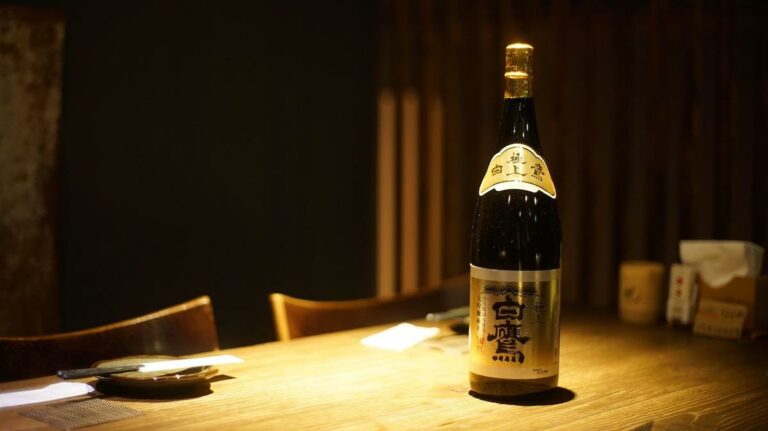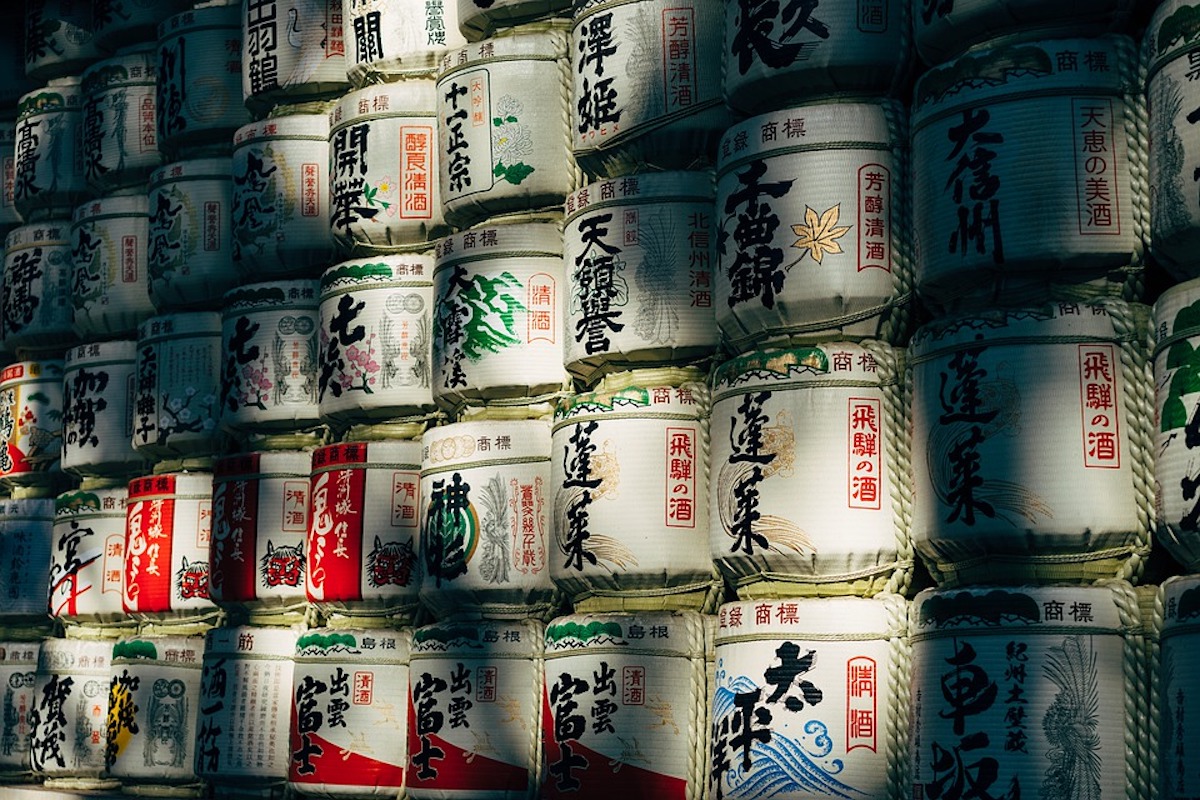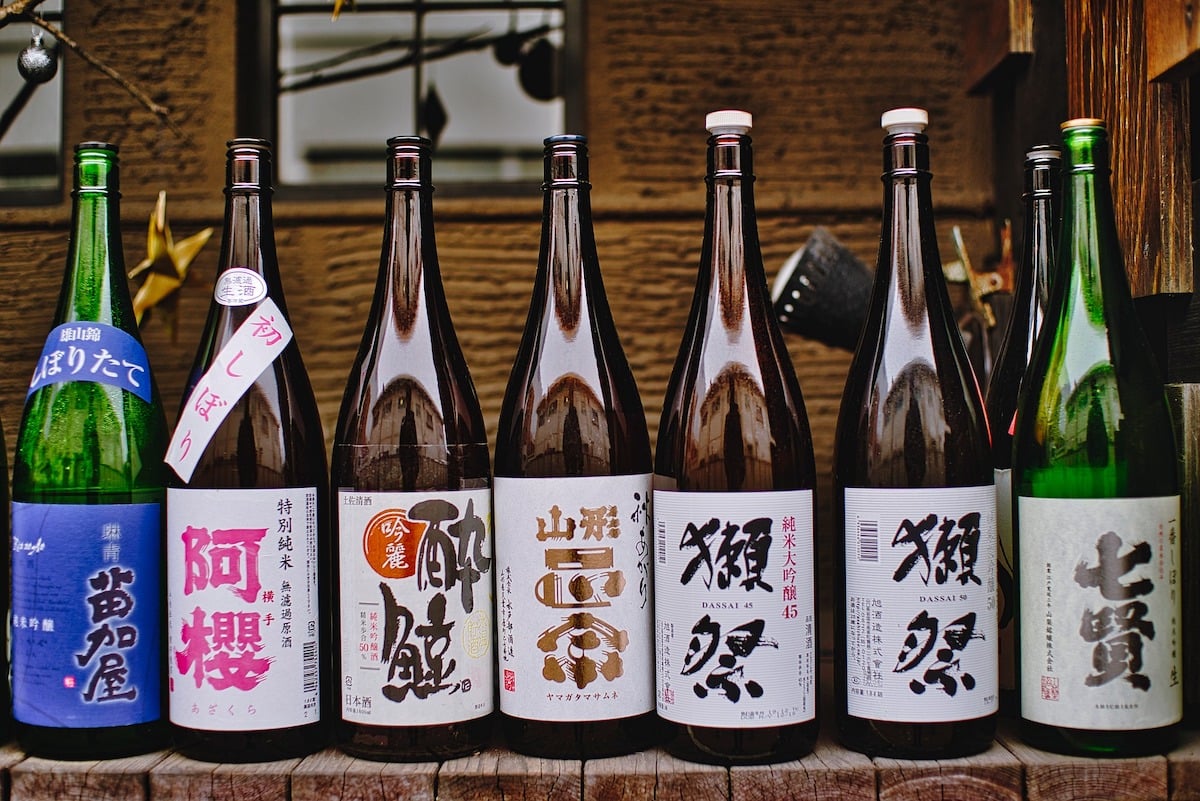
A veritable cultural institution in Japan, sake is far more than just a drink. It is an ongoing and living manifestation of rich history and retained tradition stretching back for centuries. Let’s explore sake, past and present, to see what makes it so special within Japanese society.
Perfect Preparation
Sake in Japanese can refer to any type of alcohol, while what we refer to as “sake” in English is generally termed nihonshu in Japanese. Sake invariably consists of four key elements: rice, koji (a kind of fungus that helps convert rice starch to sugar), water, and yeast. The rice is milled in order to remove an excess layer of bran, and this treated rice is mixed with water and koji. Approximately four fifths of sake is water, so the quality of the water used is highly important. The amount of time the sake spends fermenting varies depending on what sort of sake is being made, but typically lasts from between 25 and 30 days.
Sake’s alcohol content typically hovers in the region of 15%, making it significantly stronger than beer and a little stronger than wine, while its colour tends to vary between virtually transparent to having a slight yellow hue. Sake is also naturally low in acidity, contributing to its agreeable taste to even the newest of enthusiasts.
The production of sake commences with the milling (also known as polishing) of rice collected from the harvest. Rice used in sake consists of larger grains than the kind of rice that ends up on dinner tables, and is polished far more thoroughly than the latter as well. The more polishing involved, the higher designation of sake emerges at the end of the process. These designations include Honjozo, Futsu, Tokubetsu, Ginjo, and Daiginjo. Each of these have their own unique characteristics that can be appreciated individually and compared academically.
Junmai is a special type of sake which is made exclusively from pure rice and water, and has a greater percentage of rice solids than its counterparts. It is generally served at special occasions, such as weddings and other festive events. The kind of sake that you will come to love the most will depend on your own personal tastes, so don’t be afraid to experiment until you come across a variety that speaks to you.

A Storied History
Rice has been used in the production of alcoholic beverages across Asia for millenia. The origins of sake can be traced back to around 2,500 years ago, when rice cultivation was first introduced to Japan from China. By the 8th century it had become the drink of choice at the imperial court, and in the centuries following it spread across the land. Authorities imposed a new tax on sake production in the 14th century, which resulted in the establishment of breweries called kura.
The brewing of sake exploded in popularity during the Meiji Era, with many wealthy landowners taking advantage of the improvements in technology brought about by Japan’s opening to the West. These mechanical innovations further improved during the 20th century, and by the 1980s sake was being enjoyed everywhere from Paris to New York thanks to the country’s postwar economic boom. Nowadays anyone in Japan can easily pick up a bottle at their local convenience store, enjoy a drink with friends at a cosy izakaya, or perhaps even venture out to a dedicated sake bar.
Today sake is readily and easily available in all budget ranges, and there are more varieties and styles to be sampled than ever before. There are well over 1,000 sake breweries dotted the length and breadth of Japan, with Niigata Prefecture having the largest number followed by Nagano and Hyogo. Those who work in sake breweries are referred to as Kuraibito, and the person in charge of the whole process is the Toji. Such professions are held in high societal regard, and are often passed down from generation to generation. It is often painstakingly intense and focused work, but the workers find that the finished product is more than worth the effort.
How to Drink Sake Like a Local
The small cups from which sake is traditionally drunk are called choko, but it is also common to drink from a masu. This is a square box made of wood that was originally used as a measurement of rice before Japan switched to the metric system in the final years of the 19th century. There is a much-loved custom in which a glass is placed within a masu and the sake is poured until both vessels overflow. Cups are typically filled from a jug known as a tokkuri. At more formal occasions it is polite not to fill your own glass, but allow those around you to do it on your behalf. This custom is not rigidly held at more relaxed gatherings.
In the past, sake would have traditionally been served warm. These days it is enjoyed chilled, hot, or at room temperature based on the time of the year and the personal preferences of the drinker. Sake also pairs extremely well with food, both Japanese and Western. Its smooth and somewhat sweet taste means it works in tandem with everything from seafood to spaghetti. If that were not enough, sake itself can be used as an ingredient in cooking. It is often used in marinades for fish and meat as a means of both tenderising and reducing their odour.

A Continuing Legacy
Sake has historically played an integral role within Japanese culture and society, especially within the context of religious rituals, both Shinto and Buddhist, as well as during festival celebrations. The consumption of sake during the former served as a means by which priests were able to interact with the divine, while also serving as a form of purification. Sake’s enduring significance for Japan is perhaps best illustrated by the consumption of toso, a spiced variety of sake associated with medical properties, during Japanese New Year celebrations. It is enjoyed by young and old alike, bridging the gap between generations and securing the future of Japan’s national drink.




















